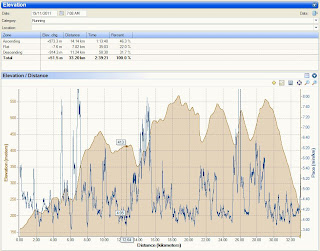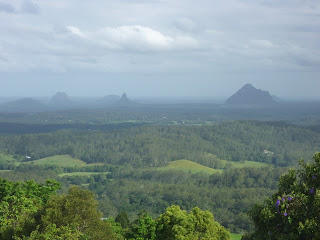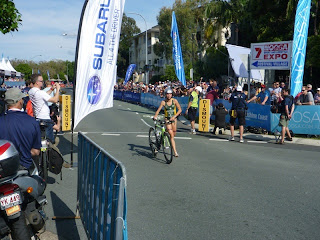 The world of ITU racing is building to climax with this year’s Olympic Games in London where new Gold medallists will be crowned. For anyone who wins this race nothing else across the year matters, with lead-up events serving as selection events for many countries, and post Olympic races merely there for academic records. It’s all about the Olympics...so with that as an introduction let’s look at the 7 big questions to be answered this year:
The world of ITU racing is building to climax with this year’s Olympic Games in London where new Gold medallists will be crowned. For anyone who wins this race nothing else across the year matters, with lead-up events serving as selection events for many countries, and post Olympic races merely there for academic records. It’s all about the Olympics...so with that as an introduction let’s look at the 7 big questions to be answered this year:1. Will the Brownlees go 1-2 in the Olympics?
They are an unbeatable combination and can dominate a race anyway they please, with the older Alistair having an edge over Jonathon. These guys are fearless and represent a new breed of athletes racing triathlons in a new way – leading and driving breaks at any stage of the race. They are forcing the field to raise their game to be true all-round athletes, an evolution on from swimmers who run well. Will the field be able to find a way to break the Brownlees in 2012? Will they dominate in London?
2. Who is most likely to step up to challenge the Brownlees, and what tactics will they use?
The Brownlees did not win every race in 2011, so those races perhaps serve as a case study for how to overcome them. They were also put under pressure at times, where perhaps they were close to cracking...who knows. In looking at the profile of the athlete most likely to beat the Brownlees, they must be front pack swimmer, have exceptional bike capability – and tactics – and able to run close to 30 min off the bike (on an accurate 10km course). Then they must have the courage and conviction to risk their race for a famous victory. Only Javier Gomez seems to have the firepower to achieve this, although several Europeans are rapidly improving and seem likely to feature more in 2012. How will races be run and won with the Brownlees in them?
3. Will Paula Finlay get it together for the whole season?
The 2011 women’s season was in two parts – the first dominated by Paula Finlay who won races in the “classic” style of outrunning – out-kicking – the field. In the second half, while Finlay succumbed to injuries, Helen Jenkins took over the mantle with a style of racing synonymous of her countrymen – racing from the front – only to be challenged late in the season by the all-round performance of Andrea Hewitt. Who knows what would have happened if Finlay held it together for the whole season...and what if she does in 2012? Jenkins seems to be the person to beat in her home Olympics – how will her front-running tactics impact on Finlay, especially if there is a gap out of the swim?
4. Can Emma Snowsill recapture her best form?
Snowsill is a formula 1 athlete – her results speak for themselves. However apart from a few fleeting glimpses since Beijing – eg, Budapest in 2010 – she has been out of sorts for various reasons for some time. However she is still a formula 1 athlete and has shown she has the all-round ability to tear a race apart. So will she get her mojo back in the Olympic year when it counts most? – one would think she is a better than even chance if she gets to the start line as fit and healthy as she knows she is able to...you would be foolish to bet against her.
5. Will team tactics play a role in the Olympics?
The potential for team tactics have been an increasingly hot topic in triathlons over recent years, based mainly around the nature of bunch riding and how well it lends itself to the coordinated protection of selected athletes to deliver them to the run leg in the best shape possible. Usually athletes deny the existence of such tactics, but race circumstances seem too obvious for it not to happen...especially where the national stakes are highest at the Olympics. So will 2012 see the emergence of team tactics amongst nations, perhaps motivated as tactics to beat the Brownlees, or will the individual glory available overcome such tactics?
6. Will team triathlon gain popular support to be successful?
The introduction of teams triathlon (distinct from team tactics) has been a strategic step by the ITU to hopefully have more Olympic medals on offer in 2016 – currently just two (men & women) – as well as a new way to package the sport to the public. Despite offering a World Championship title, the public uptake has been slow as witnessed via media coverage. And while the athletes directly involved have enjoyed the experience, others seem to have been indifferent to the existence of the format. Perhaps there needs to be a greater number of team triathlon events so the public see it more often and embrace it. Regardless, one suspects the ITU will push ahead with teams triathlon and that it will be a success.
7. Who will get in the Australian Olympic team?
The big question for 2012 is who will fill the remaining spots after the early nominations of Emma Moffatt and Brad Kahlefeldt. Assuming we’ll have 2 further men’s and women’s slots, it would seem that only the women’s team selection is obvious with Emma Snowsill and Emma Jackson putting themselves forwards to make up the Australian team. However the men’s team selection is wide open with names like Courtney Atkinson, Brendan Sexton and Chris McCormack being most likely, but with a host of others in with a chance of forcing themselves into selection in the way Peter Robertson did for the 2000 Olympics. The upcoming selection races in March and April will be intriguing, and will no doubt prompt endless debate as to the final team selection. However it turns out, you can be sure we’ll all be giving them full support in London.


















































